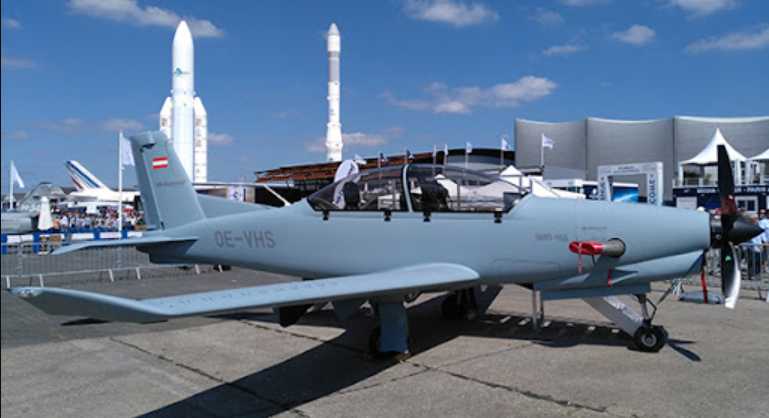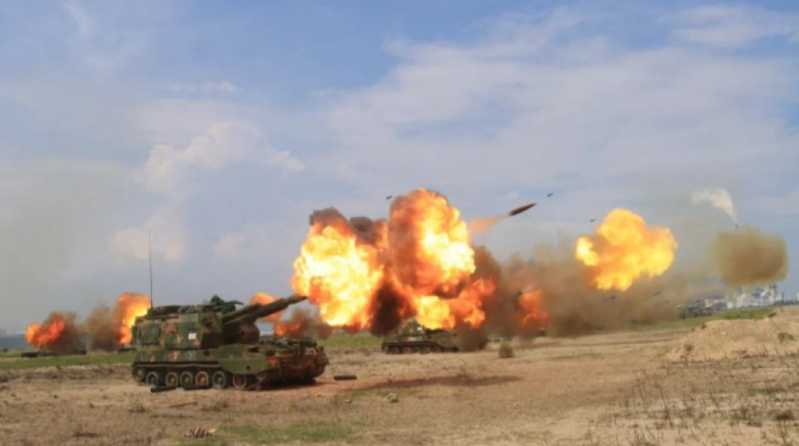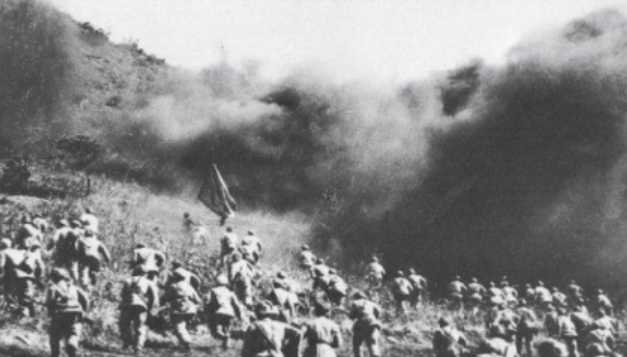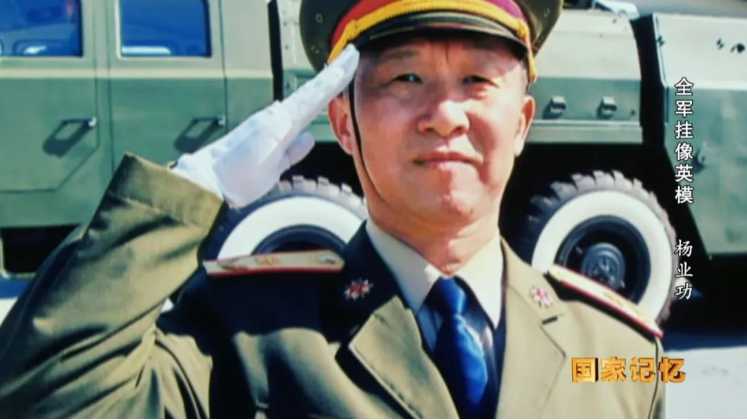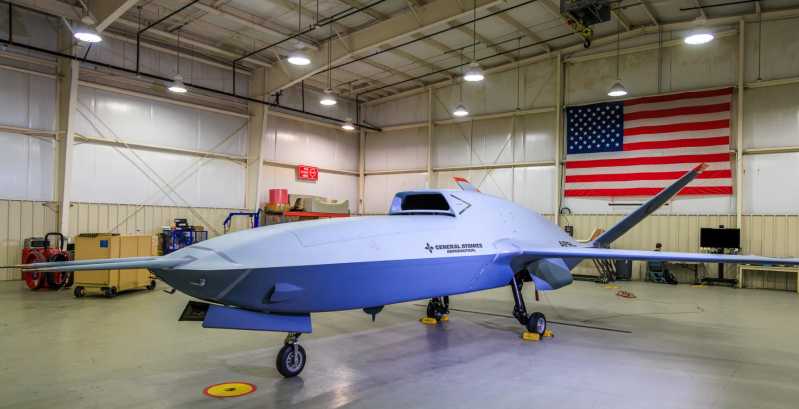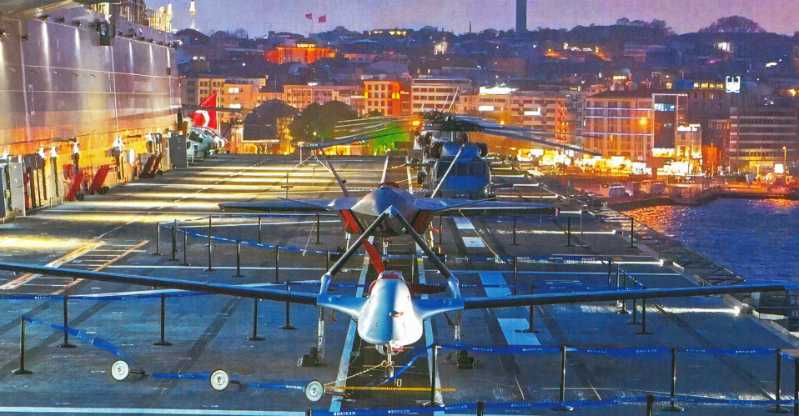Recently, there was news online that my country’s latest TA-20 primary trainer aircraft has successfully completed its maiden flight and is about to enter the mass production stage. At the same time, the Internet gave it a high evaluation, saying that the TA-20 primary trainer aircraft is a trainer aircraft independently developed by China with advanced performance, powerful functions and wide adaptability. It is also China’s first trainer aircraft made of composite materials. The maiden flight of TA-20 not only demonstrated China’s technical level and independent innovation capabilities in the field of trainer aircraft, but also a major progress of the Chinese Air Force in flight training. It also contributed and demonstrated China’s national defense construction and aviation industry, and is a new breakthrough in China’s aviation industry. In fact, as early as 2018, the TA-20 trainer aircraft successfully completed its maiden flight in Wuhu. So, what is the performance of the TA-20 primary trainer aircraft? What are its future prospects? Can it replace the CJ-6 and become my country’s new generation of primary trainer aircraft?
The development of China’s primary trainer aircraft
For a long time, the primary trainer aircraft used by the Chinese Air Force to train pilots was the CJ-6 aircraft finalized and produced by Nanchang Aircraft Manufacturing Company in 1962. It has been in service in the Chinese Air Force and local aviation schools for a long time, and is still the main force of my country’s primary trainer aircraft. For decades, this aircraft has successfully trained tens of thousands of pilots for my country, and can be called the cradle of the growth of Chinese pilots.

The CJ-6 is an all-metal hardshell structure with a double-beam lower wing. The right outer wing is equipped with an airspeed tube, the trailing edge of the wing is equipped with ailerons, and the outer wing has a 7-degree dihedral angle. It adopts a retractable front three-point landing gear. The front landing gear is a strut type, and the main landing gear is equipped with a shock absorber, which is suitable for landing on grass. The wheels use medium-pressure tires, and the main wheels can be braked. The cockpit of the CJ-6 is divided into a front cabin and a rear cabin. The canopy consists of a front windshield, a front movable canopy, a middle fixed canopy and a rear movable canopy. The front and rear cabins have a linked dual control mechanism and various indicating instruments. In terms of avionics system, it is equipped with flight instruments such as altimeter, speedometer, vertical speedometer, horizon, magnetic compass and engine tachometer, as well as radio equipment such as ultra-short wave radio and radio compass.
Its main performance parameters are 8.46 meters in length, 10.18 meters in wingspan, 2.94 meters in height, 17 square meters in wing area, 1172 kilograms in empty weight, 110 kilograms in fuel capacity, and 1419 kilograms in take-off weight. It is equipped with a piston-6 star-type air-cooled 9-cylinder (HS-6) engine with a rated power of 198.5 kilowatts; it is equipped with a pair of "Fenfa" 530 automatic variable pitch two-blade all-metal propellers. The maximum level flight speed at sea level is 286 kilometers per hour, the cruising speed at an altitude of 1000 meters is 170 kilometers per hour, and the maximum allowable dive speed is 350 kilometers per hour. The sea level climb rate is 6.3 meters per second, and it takes 16 minutes to climb from sea level to an altitude of 3000 meters. The take-off run distance is 280 meters, the landing run distance is 350 meters, the maximum ceiling is 5080 meters, the maximum range is 640 kilometers, and the endurance time is 3.6 hours.
Since mass production in 1962, the cumulative production of the CJ-6 has exceeded 3,000. As a low-speed propeller aircraft, after decades of extensive use, it has long been proven that the aircraft is safe, reliable, durable, easy to operate, and has low operating costs. It is very suitable for primary training and sports aviation purposes. In addition to being used in large quantities by the Chinese Air Force, it is also in large numbers in the air forces of the third world. In addition, the CJ-6 is also loved by European and American aviation enthusiasts for its good maneuverability and excellent safety performance, and more than 200 aircraft are retained in European and American aviation clubs.
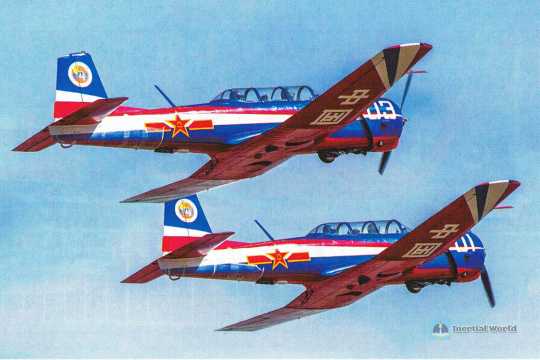
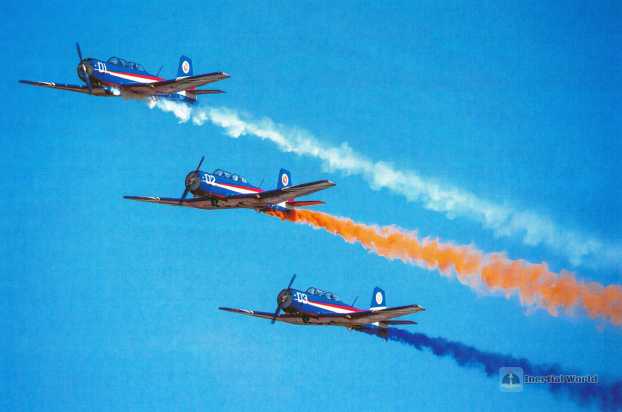
However, with the continuous development and progress of aviation technology and air force construction, the "over half a century" CJ-6 has gradually aged, and has highlighted several important defects in use, and has gradually failed to meet the requirements of the air force. First of all, as a piston single-propeller aircraft, the CJ-6 has a counter-torque effect on the fuselage when the pilot increases or decreases horsepower, requiring the pilot to control the aircraft to deflect the aileron and tail rudder to correct the gyro torque, otherwise it will cause yaw. This problem does not exist on jet trainers/fighters, which means that when students are converted from CJ-6 to jet trainers, they must spend a certain amount of time and energy to correct this control habit, which increases the elimination rate of flight students and prolongs the training time.
Second, the training starting point of the CJ-6 is low. The maximum level flight speed of the CJ-6 is only 286 km/h, while the maximum level flight speed of the intermediate trainer aircraft J-8 that connects with it is 800 km/h. After the pilots pass the CJ-6 training, they go to the J-8 for intermediate training. They often show obvious discomfort with the much higher aircraft speed, which increases the difficulty of intermediate training, indicating that the primary training cannot meet the needs of connection.
Third, the CJ-6 cockpit canopy is relatively narrow. If the plane is slightly bumped in the air, the pilot’s head can easily hit the canopy. If the pilot wears a helmet, the range of head movement will be further limited. Fourth, the CJ-6 has a poor field of view directly below the front. At the moment before the plane lands, the front view is completely blocked by the high-raised nose. The pilot can only judge whether the taxiing direction is correct by observing from the side.
Fifth, the CJ-6 uses cockpit technology from the 1950s, and the onboard instruments are simple and backward, which is not suitable for modern flight training requirements.
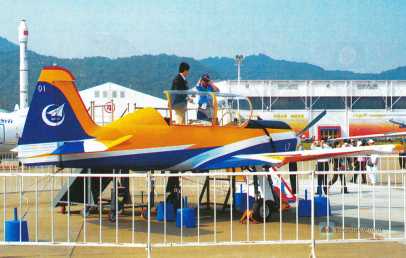
In order to solve the problems of CJ-6’s backward performance, low training starting point, difficulty in connecting with Chinese trainers, and disadvantageous training of flight trainees, Hongdu Aircraft Company raised funds on its own and jointly developed with Yak Design Bureau, a famous Russian trainer aircraft development unit. After adaptive adjustments on the basis of Yak-152 aircraft, a new domestic primary trainer aircraft was successfully developed, which is CJ-7.
CJ-7 is based on Yak-152, and the aircraft systems, finished products and accessories are adjusted according to Chinese requirements. The design, life and static tests of this project are mainly carried out by Yak Design Bureau, and the tooling and prototype manufacturing is mainly carried out by Hongdu Group. Both parties bear 50% of the workload.
The CJ-7 is a single-engine monoplane with a traditional aerodynamic layout, a lower wing, and a three-point retractable landing gear. The fuselage is an all-metal semi-monocoque structure, with an all-metal wing and an asymmetric airfoil; the cockpit is sealed but not airtight, with ventilation and heating devices for outdoor air. The two-seat stepped tandem layout is equipped with Russia’s SKS-94M adjustable ejection seat, canopy ejection, and an optional anti-gravity system. A single acrylic windshield and a single canopy open to the right. Compound control, heating and ventilation, and canopy demisting. The space behind the seat can carry 20 kg of luggage. The electronic cockpit, mechanical control system, and hand brake are used for braking, and it can take off and land normally on a dirt runway.
The power unit of the CJ-7 does not use the 360-horsepower piston engine of the Yak-152, but transplants the power system of the Nong-5B aircraft. The engine uses the Czech M601F turboprop engine, with a take-off power of 777 horsepower, a cruising power of 670 horsepower, and a unit fuel consumption rate of 0.302 kg/horsepower.hour. The propeller uses the AVIA company’s constant speed, feathering, reverse propeller and fairing V508EAG three-blade propeller. The throttle and pitch can be adjusted by a joystick. There is a fuel tank on each wing, and the fuel tank is filled with explosion-proof foam material. There is a refueling port on the upper surface of the wing. The fuel is filled by pressure refueling and gravity refueling. The fuel system allows inverted flight for 30 seconds. The use experience of the Nong-5B has proved that the engine and propeller are well matched.
The maximum level flight speed of CJ-7 is 500 km/h (3000m altitude), stall speed is 160 km/h, service ceiling is 8000m, overload limit is +7/-5g, fuel capacity is 200kg, maximum range is 1000km, endurance is 2.5 hours, take-off run distance is 210m, landing run distance is 360m, service life is 10,000 hours/30 years. Hongdu Group said in its propaganda that CJ-7 not only surpasses CJ-6 in performance indicators, but also has the biggest highlight of using turboprop engine and electronic cockpit, and the modern flight control system can automatically compensate for the anti-torque effect of propeller, so that students will not feel deflection, and the flight feeling is similar to that of jet aircraft, which solves the biggest drawback of Huozhai CJ aircraft in one fell swoop. Moreover, if the CJ-7 enters service in the Air Force, it can not only replace the CJ-6, but also replace the J-8, and form a two-level training system with the GJ-10, so as to be in line with developed countries.
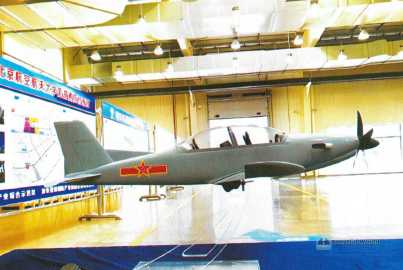
However, after evaluation, the Air Force did not agree with this statement. The Air Force believes that the actual performance of the CJ-7 has not been qualitatively improved over the CJ-6, and all the advantages of the CJ-6 have been completely lost. The reason why the CJ-6 is widely praised is that it is very friendly to beginners, with soft movements, sensitive reactions and high safety. The Yak-152 was developed from a sports aircraft, and the operating characteristics of a sports aircraft are not easy for beginners to master.
In addition, the CJ-7 is essentially an assembled product. If it is to be put into production, the localization of key systems such as engines must be solved first. After calculation, Hongdu Group quoted a unit price of 2 million yuan to the Air Force. Compared with the domestic purchase price of CJ-6 of 220,000 to 260,000 yuan and the export price of 60,000 US dollars to North America in the early years, how can the cost performance of CJ-7 impress customers? As for the question of whether CJ-7 can replace CJ-6 and JJ-8 at the same time, it seems not very reliable. Therefore, the CJ-7, which was once hotly discussed on the Internet, did not get the Air Force project at all and died without success.
TA-20 primary trainer
TA-20 primary trainer is a high-performance, multi-purpose, new basic trainer with an all-carbon fiber composite body developed by China Electronics Technology Wuhu Diamond Aircraft Company. It is a conventional layout of front and rear tandem two-seat, lower single wing, low horizontal tail and single vertical tail. It adopts a long-life, high-strength all-composite body structure: equipped with a domestic new turboprop engine, a 5-blade composite variable pitch constant speed propeller and a full authority digital electronic control system; equipped with a bird-proof water droplet canopy and an airtight cockpit; equipped with a domestic zero-zero ejection lifesaving seat, integrated avionics, oxygen anti-gravity and mechanical control system. The aircraft can undertake the day/night basic driving technology training tasks in the primary and intermediate training stages of the flight academy, and has advanced performance.

It is reported that the overall design of the TA-20 turboprop trainer aircraft is derived from the latest generation of two-seat turboprop trainer aircraft DART450 of the Austrian Diamond Aircraft Company, so it has strong Western aircraft design features in appearance. DART-450 is the world’s first two-seat dual-purpose military and civilian trainer aircraft made entirely of carbon fiber materials. The aircraft made its first flight on May 17, 2016 and was officially unveiled at the Farnborough International Air Show in July of that year. The aircraft uses an original high-speed wing shape, a bubble-type cockpit with a wide field of view, a side joystick, an ejection seat, a retractable surveillance camera, sensors, and an intelligent flight management control system. It is also equipped with the G3000 avionics suite produced by Garmin, including a high-resolution primary flight display (PFD) and a multi-function display (MFD). The aircraft is equipped with a 550-horsepower GE turboprop engine or a 495-horsepower A1-450S turboprop engine developed by the Ivchenko-Progress Design Bureau of Ukraine and manufactured by Motor Sich. The latter adopts a twin-rotor design and is equipped with a complete digital engine control (FADEC) system, which reduces fuel consumption by 20% compared with similar engines. The engine is equipped with a 5-blade MT propeller.
DART-450 is 10.75 meters long, 11.74 meters wide, 3.38 meters high, with an empty weight of only 1,330 kilograms, a maximum take-off weight of 2,300 kilograms, a maximum flight speed of 463 kilometers per hour, a cruising speed of 426 kilometers per hour, a ceiling of 7,010 meters, a flight time of 8 hours, a maximum range of 2,300 kilometers, a climb rate of 15 meters per second, a limited overload of +7/-5g, and a take-off and landing distance of 600 meters and 400 meters respectively. The aircraft has a payload of 870 kilograms, and can be equipped with optoelectronic equipment or large-caliber machine guns as needed, as well as rockets and small bombs for ground reconnaissance and support attacks.
Austrian Diamond Company claims that the DART-450 is comparable to the similar best-selling model EMB-312 manufactured in Brazil in terms of main performance, and the former’s unit price of about US$3.1 million is more competitive than the latter’s US$5.5 million. However, after DART-450 was launched into the international market, it did not sell well as Diamond Austria expected. The early R&D investment funds could not be recovered in time, and the small company immediately encountered a financial crisis. In order to get out of the predicament, the company sold all the intellectual property rights of its many models to Wuhu Diamond Aircraft Manufacturing Company. Previously, China Electronics Technology Wuhu Diamond Aircraft Manufacturing Co., Ltd. had successfully developed three general-purpose special aircraft, CA42 and MPPCA20, using the existing technology of Diamond Austria Aircraft Company, and publicly exhibited them at the 2018 Zhuhai Air Show. The TA-20 primary trainer is its latest product.
However, unlike DART-450, the TA-20 primary trainer has been improved and upgraded accordingly, mainly focusing on two aspects: avionics system and power system.
In terms of avionics system, when developing the TA-20 turboprop trainer, China Electronics Technology Group Wuhu Diamond Aircraft Manufacturing Co., Ltd. did not use the original Garmin G3000 avionics system, but adopted the SMART-210 integrated avionics system newly developed by Chengdu Helyuns. The biggest feature of the SMART-210 avionics system is the use of a full-size multi-function touch-screen LCD display with a display area of 20x8 inches. This design model was previously pioneered by the US F-35 fighter and has been adopted by many advanced fighters such as the Su-35 and J-20, but it is the first time it has been used on a turboprop trainer. In addition, a very necessary diffraction head-up display is also installed in the front cockpit.
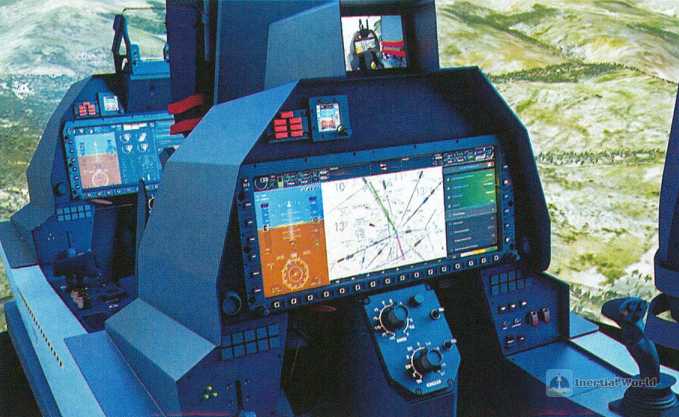

In addition, the SMART-210 avionics system also has intelligent mission planning and automatic detection capabilities, which helps to simplify flight support and improve flight safety, and can be embedded with more advanced training modules, such as airborne radar, optoelectronic detection system, fire control system, optoelectronic pod, data link, weapon management, etc. It is no exaggeration to say that the overall performance of the SMART-210 avionics system is even more advanced than the J-10 advanced trainer aircraft that the Chinese Air Force and Navy have just equipped. Moreover, after training on the TA-20 turboprop trainer aircraft, pilots can better and faster adapt to the cockpit operation and information display of advanced fighters such as the J-20 and J-16, which is conducive to the training of the fourth-generation improved and fifth-generation fighters.
In terms of power system, the TA-20 turboprop trainer also plans to upgrade the power unit, replacing the original AI-450S with a new generation of domestically produced high-power turboprop engines, and the power level must be increased to at least 500~800 kilowatts. In this way, the flight performance of the TA-20 turboprop trainer will have a leap forward. Previously, there was news on the Internet that the TA-20 was equipped with a domestically produced 750-horsepower turboprop engine.
In short, after the domestic improvement and upgrade, the performance of the TA-20 primary trainer has been greatly improved in all aspects.
What are the future prospects?
Compared with CJ-6 and CJ-7, the TA-20 primary trainer undoubtedly has the following significant advantages
First, the TA-20 primary trainer uses advanced aviation engines and aerodynamic layout, with the characteristics of high speed, high maneuverability, high reliability, etc., and can adapt to various complex environments. Compared with the CJ-6, the flight performance has been greatly improved. It can be perfectly connected and coordinated with my country’s JJ-8, JJ-9, and JJ-10, improving my country’s pilot training system and improving the training level.
Secondly, the design concept of TA-20 is "one machine for multiple uses", that is, on the basis of meeting the needs of primary training, it can also undertake multiple tasks such as advanced training, light attack, and confrontation training. Therefore, the avionics system of TA-20 adopts advanced digital, modular, and integrated design, with the characteristics of high reliability, high intelligence, and high human-computer interaction. It can provide multiple flight modes, multiple weapon mounts, and multiple fault simulation functions. It can also conduct confrontation training with active fighters, and can also conduct joint training with other training aircraft and simulators to form a complete flight training system, which can provide pilots with good, comprehensive, advanced, safe, and reliable training effects and guarantees. In addition, TA-20 also adopts a modular design, which can be quickly replaced and updated according to different training tasks and needs. In the future, it can also be quickly updated to adapt to the development of the air force training system.
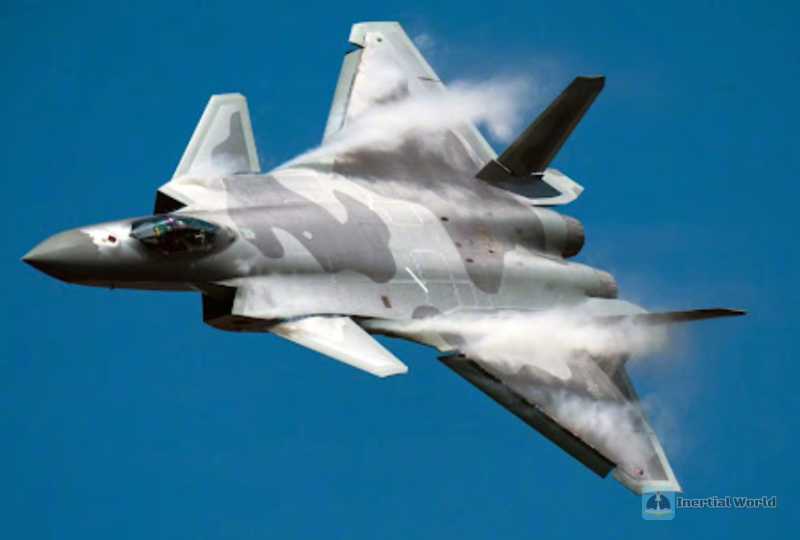
These designs make the TA-20 a comprehensive, flexible and advanced trainer aircraft. While ensuring good and reliable training results for pilots, it allows pilots to become familiar with the flight characteristics of modern advanced fighters during early training, get in touch with a variety of complex situations and response strategies, and better adapt to different combat environments and tasks. The training plan and content can be adjusted at any time, which is flexible and diverse, which is very helpful for improving the training effect of pilots and saving training time.
Again, the TA-20’s fuselage structure uses a large amount of composite materials, which reduces the weight of the fuselage, increases strength, reduces maintenance costs, and greatly improves life reliability. At the same time, the TA-20 trainer aircraft also takes into account the needs of maintenance and support, and adopts a modular design to facilitate maintenance and replacement of parts, reducing the cost of use.
Finally, all the assembly and airborne equipment of the TA-20 can be based in China. Even if the AI-450S turboprop engine is used, the engine supply is not a problem because the Ukrainian Motor Sich company has established a joint venture factory with domestic enterprises, and there is no need to worry about being controlled by others.
It is worth mentioning that the TA-20 primary trainer also adopts a side stick control design, which is the control method used by my country’s J-20, which allows pilots to adapt to and familiarize themselves with the control method of my country’s fifth-generation aircraft in advance.
However, compared with my country’s training system and training mechanism, the TA-20 primary trainer also has certain defects.
First, the existing trainer equipment system of the Chinese Air Force is probably the largest and most complex in the world, divided into three levels: CJ-6 primary trainer/JJ-8 basic trainer/JJ-7, JJ-9 and JJ-10 advanced trainer. After completing these three levels of training content, pilots will also receive training on the same type of two-seat trainer fighters when they arrive at the combat unit, such as Su-27UBK, J-11BS, J-10S, etc. In our military system, there is actually no place for Western turboprop trainers such as DART-450/TA-20.
Second, as a primary trainer, the TA-20’s avionics system and training functions are too advanced and luxurious, and even in some aspects are not inferior to trainers such as the GJ-9 and GJ-10, which is not very friendly to flight trainees who are just starting to get in touch with flight training. Moreover, when future pilots complete the flight training mission of the TA-20 and then switch to the same type of trainer aircraft such as the JJ-8, GJ-9, GJ-10, and fourth-generation and fourth-generation and half fighters, they will have to adapt to the relatively backward avionics system again, which seems a bit troublesome.
Third, the excellent flight performance and advanced avionics system have undoubtedly greatly increased the manufacturing cost of the TA-20 primary trainer. Although the TA-20 has adopted various cost-reducing measures, such as the large-scale use of composite materials, the increase in the service life of the fuselage, the use of modular design, and the reduction of subsequent maintenance and use costs, its procurement cost is also very high. For example, the prototype of the TA-20 turboprop trainer, DART-450, has a market price of up to 3.1 million US dollars. Even considering the relatively low domestic production cost, the cost of the TA-20 turboprop trainer will definitely exceed 10 million RMB. In comparison, the price of my country’s CJ-6 is very cheap, only hundreds of thousands of RMB.
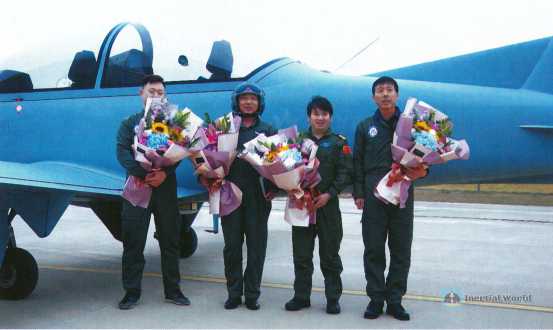
Fourth, a major feature of TA-20 is that it uses the same side stick control method as the J-20. However, among the more than 10 types of tactical aircraft currently in service in China, only the J-20 uses side stick control. A turboprop primary trainer using side stick control cannot be seamlessly connected with the J-20. In fact, after flying the TA-20, the flight trainees have to go through the selection of JJ-8, GJ-9, GJ-10 and fighter jets before they can select pilots who can fly the J-20. Unless all tactical aircraft and various types of trainers in service are converted to sidestick control in the near future, it is meaningless to use this operation method on primary trainers.
Therefore, if the TA-20 turboprop trainer is simply used to replace the CJ-6, not only will the Chinese Air Force and Navy be unable to afford such an expensive trainer, but they will also be unable to fully utilize the full performance and potential of the aircraft.
Of course, my country may not be unable to take the opportunity of mass purchase and equipment of TA-20 turboprop trainers to reform the existing trainer equipment system of the Chinese Air Force to make it more reasonable and scientific. With the overall performance and positioning of the TA-20 turboprop trainer, it can completely replace the two models of the CJ-6 primary trainer and the JJ-8 basic trainer. In this way, by canceling the primary trainer stage, the Chinese Air Force trainer equipment system can be simplified from three levels to two levels, the same as in Europe and the United States. In addition, advanced trainers should also be gradually unified into one model, the JJ-10, and the retired JJ-7 and JJ-9 can be converted into light multi-purpose combat/attack aircraft. This is undoubtedly of great significance for improving the training effect of our military pilots and saving training time.
In addition, the TA-20 primary trainer is a trainer with advanced performance, powerful functions and wide adaptability. It also has broad export prospects and may not be unable to occupy a place in the international market in the future. It is reported that TA-20 has attracted the attention and inquiries of many countries and regions, and is expected to become a new business card for China’s aviation industry, which is worth looking forward to.
Of course, what will happen to TA-20 in the future, and whether it can replace the CJ-6 and become my country’s new generation of primary trainer aircraft, depends on the specific actual situation in my country. Let’s wait and see.


